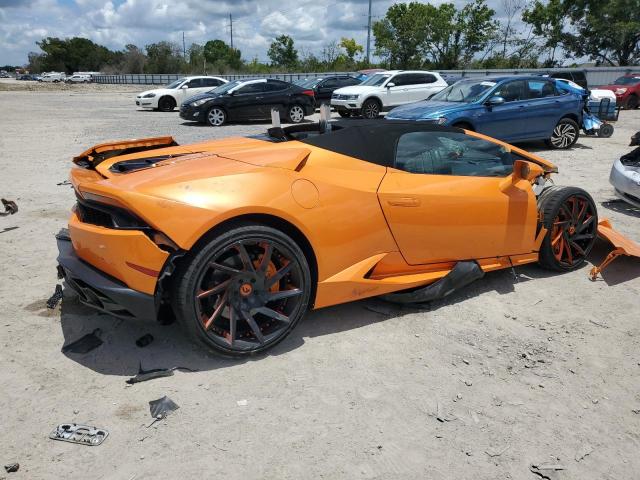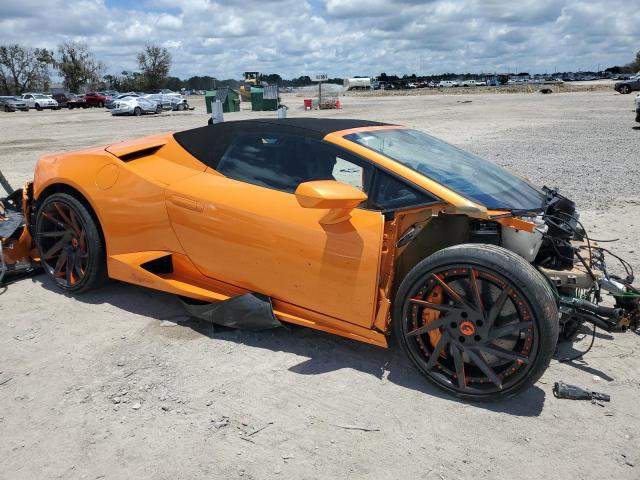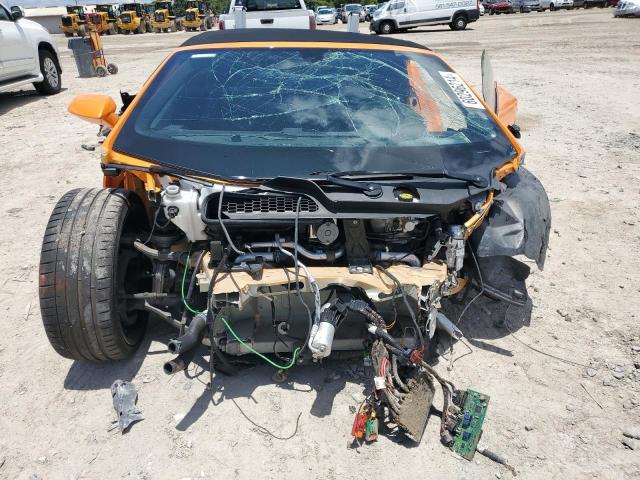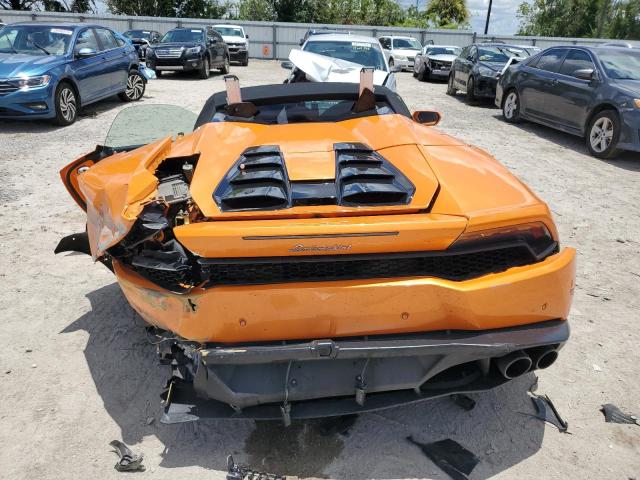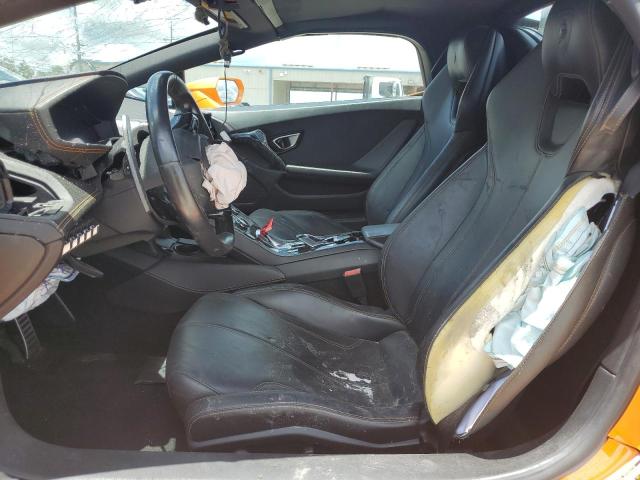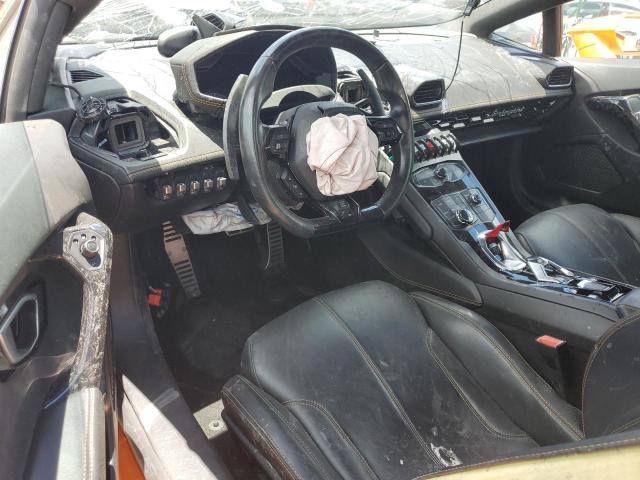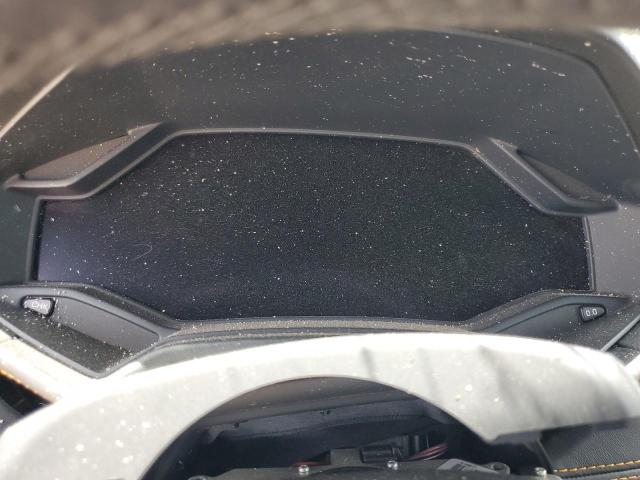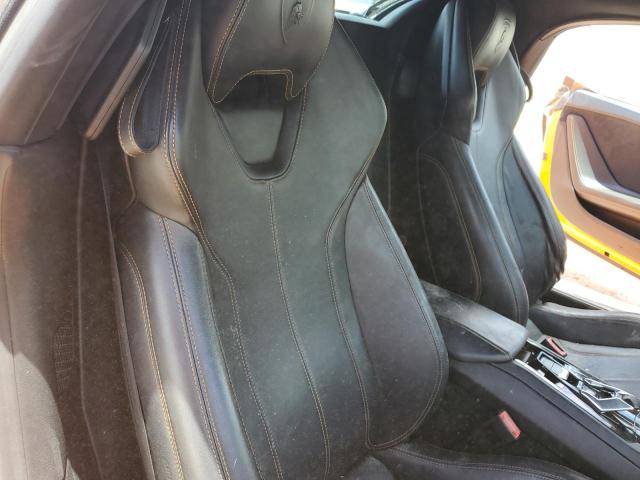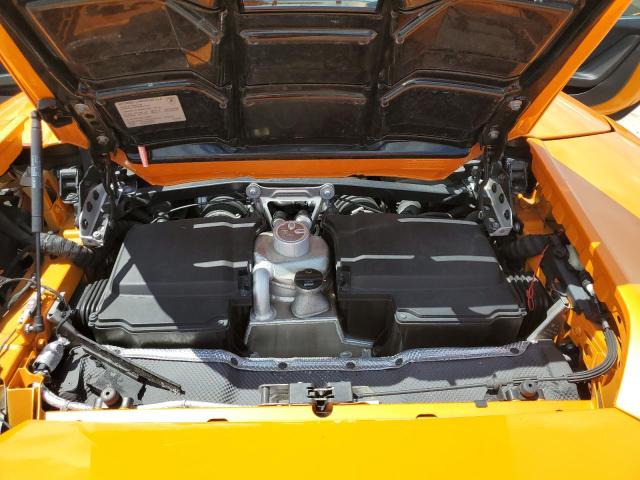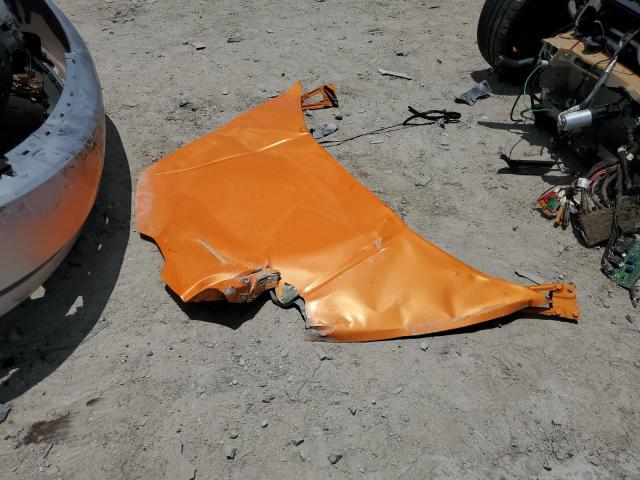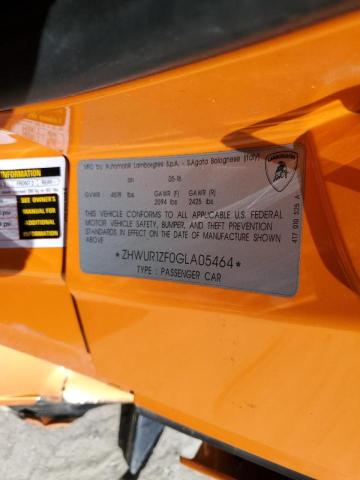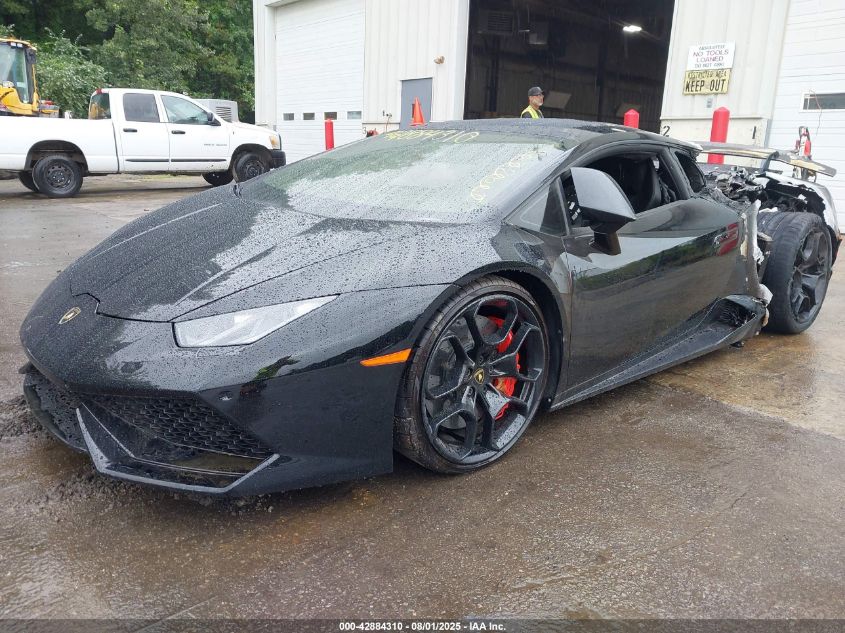2016 LAMBORGHINI HURACAN | ZHWUR1ZF0GLA05464
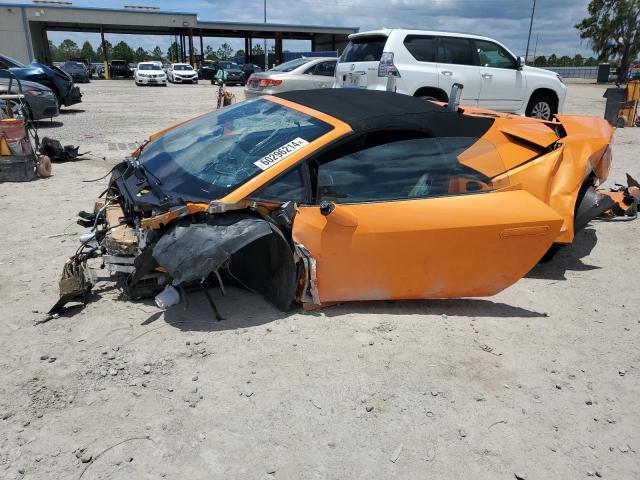 ❯
❯Lot details
- Sale Date2025-06-17
- Lot Number60296214
- ACV200000 $
- Sale documentFL - CERT OF TITLE SLVG REBUILDABLE
- LocationFL - TAMPA SOUTH
- Odometer0 miles (0 km)
- Primary DamageALL OVER
Vehicle details
- Make
- Model
- Year2016
- FuelGAS
- Engine5.2L 10
- TransmissionsAUTOMATIC
- Drive TypeAll wheel drive
Vehicle specifications
3
~$330,000
Engine: 5.2L naturally aspirated V10
Torque: 565 Nm
0–100 km/h: ~3.0 s
The Lamborghini Huracán STO is the final evolution of Lamborghini’s naturally aspirated V10 era — a street-legal track car designed to transfer motorsport DNA from the Super Trofeo and GT3 race cars into a production model. With 640 hp, rear-wheel drive, and a curb weight under 1.4 tons, it offers a purist driving experience that no turbocharged rival can replicate.
Aerodynamically, it features an integrated front aero duct system (Cofango), roof snorkel, manually adjustable rear wing, and rear diffuser — generating 420 kg of downforce at 280 km/h. Braking is provided by CCM-R carbon ceramic rotors, originally developed for Formula 1.
The V10 engine revs to 8,500 rpm, paired with a 7-speed DCT and bespoke drive modes (STO, Trofeo, Pioggia) that modify steering weight, suspension stiffness, traction logic, and throttle sensitivity. The Brembo CCM-R brakes and ultra-precise steering make it ideal for circuit use, while the stripped cabin, with carbon fiber door panels and optional harnesses, reminds you of its racing intent.
Unlike the Evo AWD, the STO is about feel over forgiveness. It lacks front-drive traction but compensates with throttle-adjustable rotation, sharper feedback, and lower inertia.
The Huracán STO earns its place in the performance registry as the pinnacle of Lamborghini’s NA V10 platform — an analog-feeling, high-revving exotic for the track-focused purist. It closes a chapter before the hybridized Revuelto generation takes over.
Final Bid Lamborghini Huracan (2016)
$45,250
$96,219
$121,000
Body Styles
Coupe (LP 610-4, EVO, Tecnica, STO, Sterrato) – from the original angular LP 610-4 to the track-focused STO and rally-style Sterrato, all Huracán coupes feature a sharp wedge silhouette, hexagonal motifs, and a mid-engine layout. Later models like the Tecnica feature revised rear fascias, Y-shaped DRLs, and integrated active aero.
Convertible (Spyder variants) – the Spyder versions of the LP 610-4, EVO, and RWD bring open-air drama to the same platform, using an electrohydraulic folding soft top that deploys in 17 seconds. The design retains chassis rigidity with reinforcements and optimized weight distribution.
Track-focused (STO) – inspired by the Huracán Super Trofeo race car, the STO is a rear-wheel-drive, lightweight, track-legal monster, with a massive rear wing, carbon bodywork, NACA ducts, and rear-wheel steering. It offers extreme downforce and driver feedback with no compromise.
All-terrain (Sterrato) – the Sterrato is the world’s first rally-ready supercar, featuring raised suspension, all-terrain tires, roof rails, LED pod lights, and aluminum skid plates, while retaining the V10 soundtrack and AWD performance – limited to 1,499 units worldwide.
Model Name Meaning (Manufacturer)
“Huracán” means hurricane in Spanish, and also references a famous fighting bull from 1879 known for its courage. The name fits Lamborghini’s bullfighting naming tradition and reinforces power and ferocity. “STO” stands for Super Trofeo Omologata, linking it directly to Lamborghini’s GT3 racing efforts. “Sterrato” translates to gravel or dirt road, highlighting its off-road capability. “Tecnica” denotes technical balance between track and road usability.
Model Name Meaning (Languages)
“Huracán” is universally memorable and exotic, easily understood in all markets. “STO”, “Tecnica”, and “Sterrato” reinforce performance, motorsport, and exploration respectively. Lamborghini’s naming language always blends emotion, power, and cultural resonance, and Huracán follows suit across its variants.
Body & Interior Colors and Rims
Lamborghini offers an expansive Ad Personam program for the Huracán lineup. Popular colors include Giallo Inti, Rosso Mars, Verde Mantis, Blu Aegir, Grigio Telesto, and Arancio Borealis, alongside matte finishes like Nero Nemesis and Bianco Canopus. The STO and Sterrato received special liveries with race-inspired striping, color-matched wings, or military-style accents.
Interior trims include leather, Alcantara, carbon fiber, and optional forged composites. Standard themes feature contrast stitching, laser-cut hexagon motifs, and model-specific logos. The STO gets bare door panels, pull straps, and monocoque race seats, while Sterrato interiors include rubberized floor mats, aluminum pedals, and multi-material seat surfaces for durability.
Wheels range from 19 to 20 inches (Sterrato uses 19” only) with designs like Narvi, Aesir, Loge, and Mimas. Calipers can be ordered in up to 11 colors, and carbon-ceramic brakes are standard on higher trims. The STO offers center-lock wheels, while Giallo or Rosso center caps with Lambo badges are popular on custom builds.
Top Expensive Options
- Ad Personam Paint or Heritage Liveries: ~$10,000–30,000
- Full Carbon Fiber Exterior Kit (STO / Tecnica): ~$18,000
- Sensonum or Bang & Olufsen 3D Audio: ~$6,500
- STO Lightweight Carbon Racing Seats: ~$7,500
- Lifting System with Magneto-Rheological Suspension: ~$4,500
- Painted or Matte Center-Lock Wheels: ~$5,500
- Track Telemetry + Lap Timer System: ~$4,200
- Interior Contrast Stitching and Alcantara Pack: ~$3,500
- STO Livery Paint Packs / Sterrato Off-Road Pack: ~$6,000
- Fire Extinguisher, 4-Point Harness (Track Package): ~$2,500
vs Competitors
The Lamborghini Huracán, produced from 2014 to 2024, carved out a unique niche in the supercar world by blending exotic drama with surprising usability — while staying fiercely loyal to a naturally aspirated V10 engine in an era increasingly dominated by turbos and hybrids. Over its decade-long production run, it squared off with direct rivals like the Ferrari 488/F8 Tributo, McLaren 650S/720S, Audi R8, Porsche 911 Turbo S, and later, the Ferrari 296 GTB and McLaren Artura.
Compared to the Ferrari 488 and F8 Tributo, the Huracán traded turbocharged efficiency and mid-range torque for raw, high-revving emotion. Ferrari’s V8s were objectively quicker in many scenarios, but the Huracán’s 5.2-liter V10 offered instant throttle response and a spine-tingling soundtrack unmatched by turbo rivals. While Ferraris leaned toward precision and sharpness, the Huracán leaned into theatricality and emotional engagement, with aggressive styling and a cockpit that felt more like a fighter jet than a minimalist instrument.
Against the McLaren 650S and 720S, the Huracán was less technologically advanced in terms of active aero and carbon fiber monocoques, but more approachable for many drivers. McLarens impressed with their explosive performance, light weight, and advanced chassis systems, but often lacked the daily drivability and visceral engine character that defined the Huracán. The Lamborghini also had the edge in visual drama and build quality, especially in later trims like the Performante and Tecnica.
Its closest mechanical cousin, the Audi R8, shared the same V10 engine and basic platform, but the Huracán always maintained a sharper, louder, and more track-focused persona. While the R8 was lauded for its everyday usability and understated design, the Huracán emphasized visual aggression, edgier handling, and exclusivity, appealing more to purists and collectors who craved the Lamborghini experience over balanced refinement.
In comparison to the Porsche 911 Turbo S, the Huracán was less practical and less forgiving in daily use, but significantly more emotional. The Porsche offered unmatched composure, all-weather usability, and blistering straight-line speed, but the Huracán countered with mid-engine balance, exotic sound, and supercar theater that made every drive feel special — even at low speeds.
In the final years of its production, the Huracán faced new electrified competitors like the Ferrari 296 GTB and McLaren Artura, both plug-in hybrids with advanced torque vectoring and cutting-edge platforms. Yet, the Huracán held its ground by becoming the last naturally aspirated V10 supercar in its class, offering a driving experience that felt raw, analog, and increasingly rare — a feature, not a flaw, in the eyes of many enthusiasts.
Fun Fact
The Huracán was the last Lamborghini to feature a naturally aspirated V10, and became the brand’s most successful model ever, with over 24,000 units sold worldwide. The STO lapped the Nürburgring in under 7 minutes, while the Sterrato made history as the first supercar engineered for sand, gravel, and snow, cementing its legacy as Lambo’s wildest creation yet.



